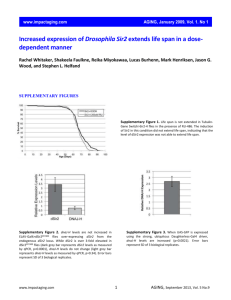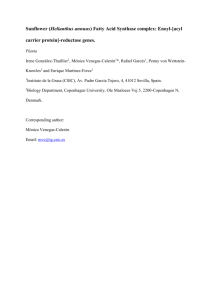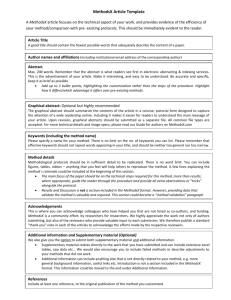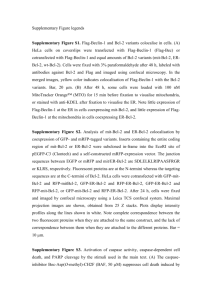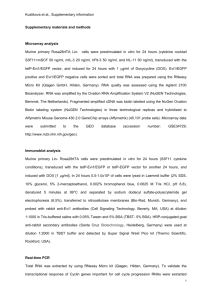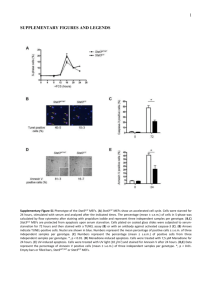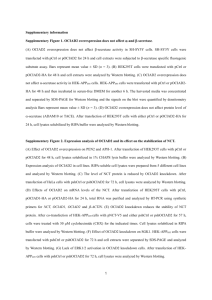tpj12665-sup-0012-Legend
advertisement
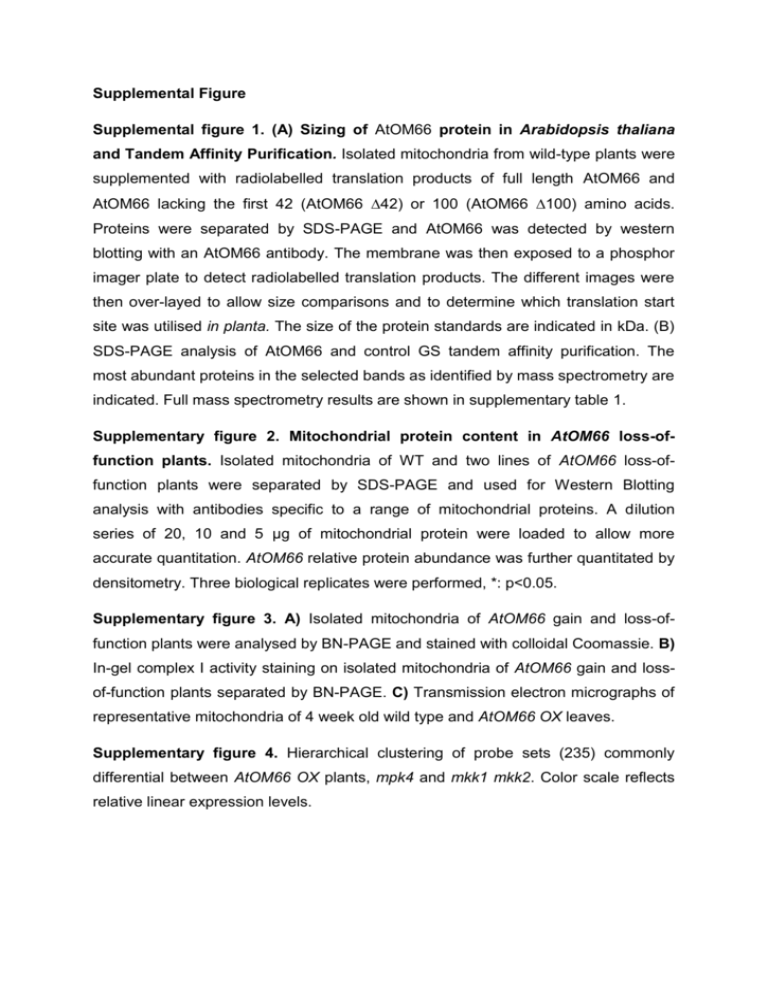
Supplemental Figure Supplemental figure 1. (A) Sizing of AtOM66 protein in Arabidopsis thaliana and Tandem Affinity Purification. Isolated mitochondria from wild-type plants were supplemented with radiolabelled translation products of full length AtOM66 and AtOM66 lacking the first 42 (AtOM66 42) or 100 (AtOM66 100) amino acids. Proteins were separated by SDS-PAGE and AtOM66 was detected by western blotting with an AtOM66 antibody. The membrane was then exposed to a phosphor imager plate to detect radiolabelled translation products. The different images were then over-layed to allow size comparisons and to determine which translation start site was utilised in planta. The size of the protein standards are indicated in kDa. (B) SDS-PAGE analysis of AtOM66 and control GS tandem affinity purification. The most abundant proteins in the selected bands as identified by mass spectrometry are indicated. Full mass spectrometry results are shown in supplementary table 1. Supplementary figure 2. Mitochondrial protein content in AtOM66 loss-offunction plants. Isolated mitochondria of WT and two lines of AtOM66 loss-offunction plants were separated by SDS-PAGE and used for Western Blotting analysis with antibodies specific to a range of mitochondrial proteins. A dilution series of 20, 10 and 5 µg of mitochondrial protein were loaded to allow more accurate quantitation. AtOM66 relative protein abundance was further quantitated by densitometry. Three biological replicates were performed, *: p<0.05. Supplementary figure 3. A) Isolated mitochondria of AtOM66 gain and loss-offunction plants were analysed by BN-PAGE and stained with colloidal Coomassie. B) In-gel complex I activity staining on isolated mitochondria of AtOM66 gain and lossof-function plants separated by BN-PAGE. C) Transmission electron micrographs of representative mitochondria of 4 week old wild type and AtOM66 OX leaves. Supplementary figure 4. Hierarchical clustering of probe sets (235) commonly differential between AtOM66 OX plants, mpk4 and mkk1 mkk2. Color scale reflects relative linear expression levels. Supplementary Methods. Supplementary Table 1: TAP mass spectrometry analysis and Genevestigator gene expression data. Bands in TAP analysis correspond to Supplementary Figure 1. MW: molecular weight. Relative Gene expression levels of AtOM66 taken from MEXP-81 (ArrayExpress) microarray data. Supplementary Table 2: ATH1 GC-RMA normalised expression microarray data. UT: untreated; ED: early drought; LD: late drought Supplementary Table 3: Cyber-T microarray statistical analysis. Pairwise comparisons are indicated. Statistically significant results are indicated in red. Supplementary Table 4: Chi-square comparison test between different mutant data sets. Significant changes are based on 2 fold change and PPDE(<p) > 0.95. (AtOM66 OX2P + AtOM66 OX2E) signifies the probe sets that are commonly differential between the both AtOM66 overexpression lines. Microarray Gene Ontology Analysis on AtOM66 OX2P and OX2E overlap, and atom66 loss-offunction. Supplemental Table 5: Athena promoter analysis of genes constitutively altered in expression in both AtOM66 overexpression lines (455 probe sets). P-values for overrepresentation, number of promoters containing the putative binding sites and total number of sites present in the set, binding site sequence and description are shown. Supplementary Table 6: primers used in this study.




